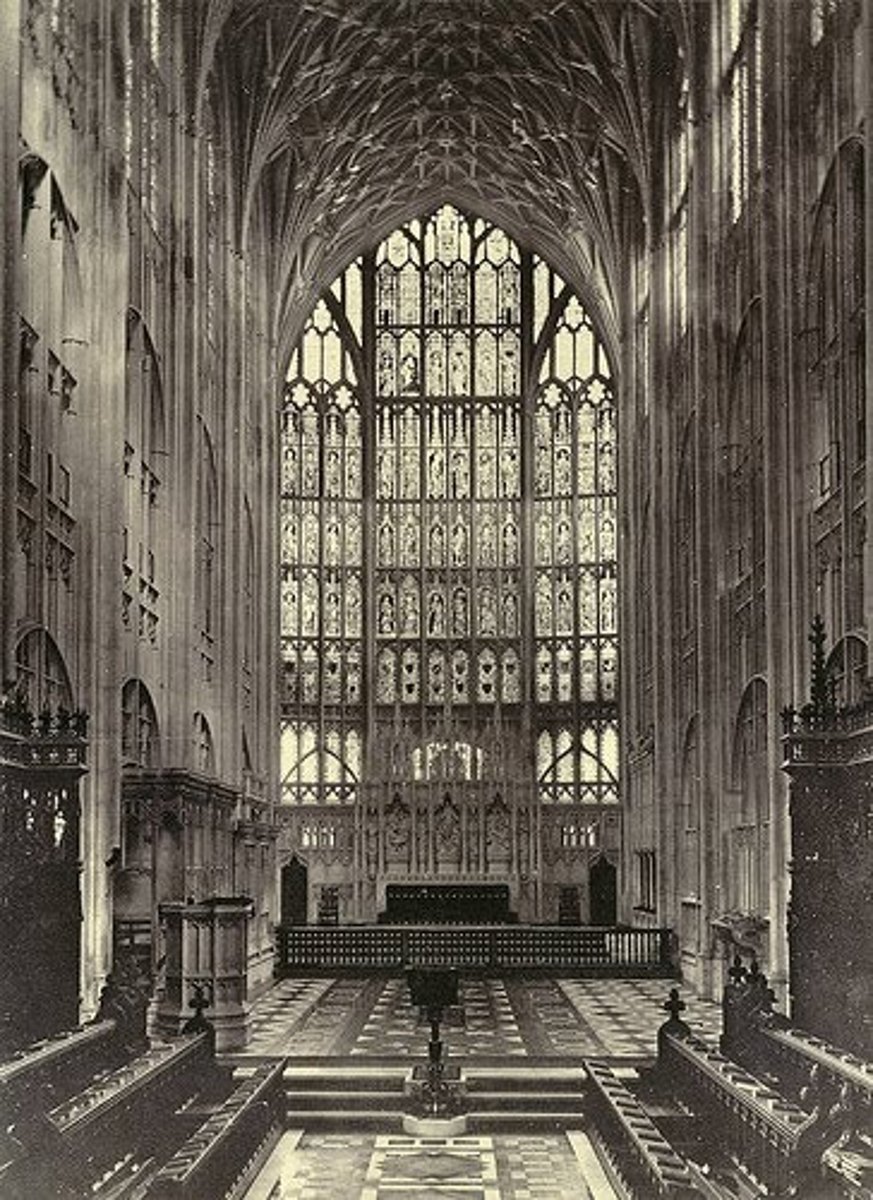Architecture Appreciation Test 2 1013 - Briar Jones
1/71
There's no tags or description
Looks like no tags are added yet.
Name | Mastery | Learn | Test | Matching | Spaced |
|---|
No study sessions yet.
72 Terms
"Dead" Load
forces from all the "immovable" elements of a building (weight of building materials, walls, floors, etc)
"Live" Load
forces from all the "movable" elements of a building (people, equipment, furniture, etc)
Compression
capacity to resist being pushed together
Tension
capacity to resist being pulled apart
Post & Beam/Lintel
1. wood beam, steel cupping post
2. steel beam, welded steel post
3. 2 steel beams welded together
Frame
wood
steel (tall buildings; light weights; thin walls; take veneers of brick, stone, stucco, etc)
Masonry
brick
concrete
stone (heavy, thick walls, costly (today), good insulation)
Freedom Tower
David Childs, FAIA (SOM), & Lubscilm
Menhirs
single stone standing upright
Dolmen
several stones supporting a stone slab
Henges
circular ditches around which some Megalithic monuments are arranged
Cromlech
circle of stones
Trabeation
post & lintel
Stonehenge
most famous Neolithic monument
built 3000 BC - 2100 BC
tops of stones/columns - mortise and tenon
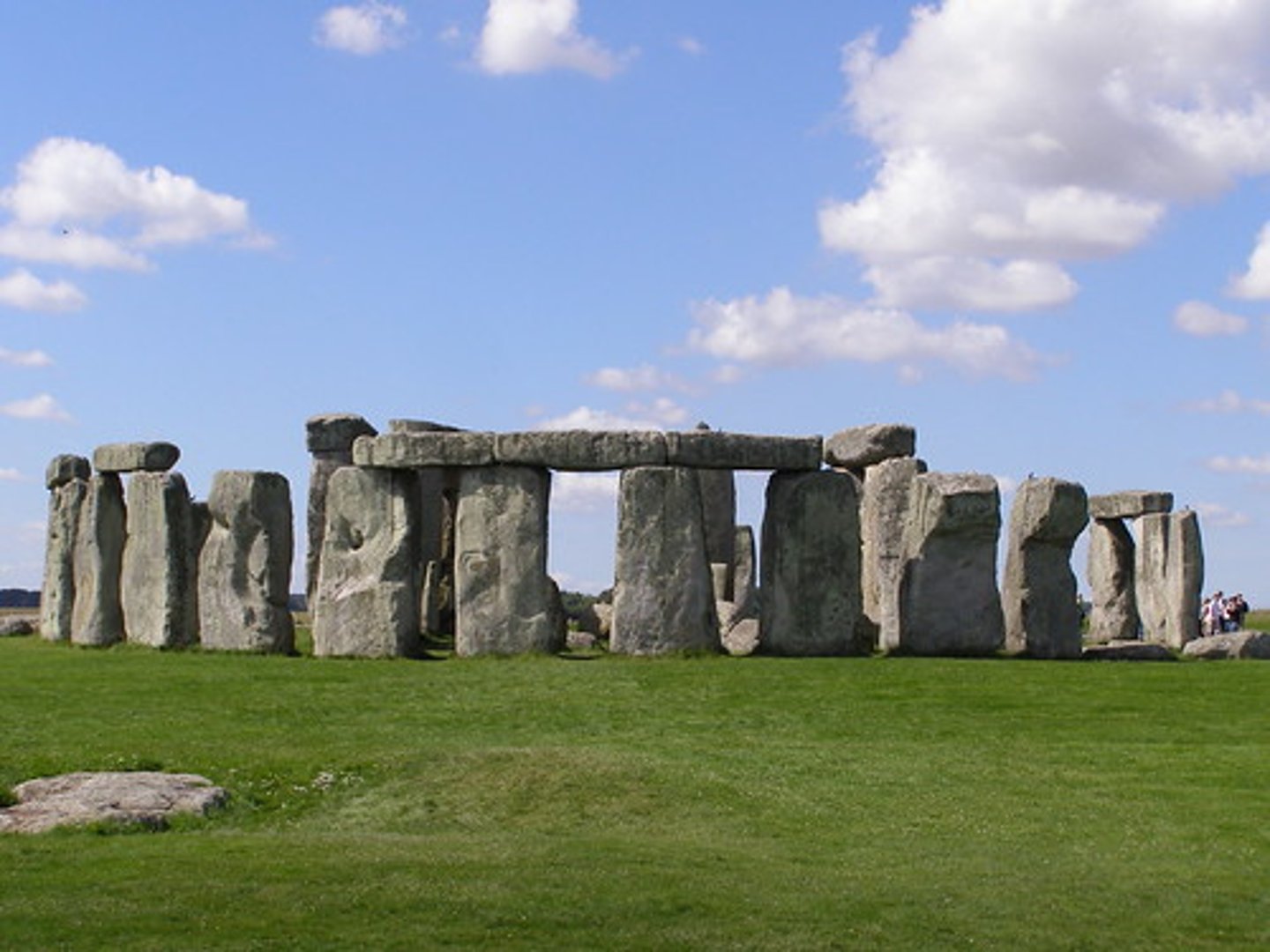
3 Types of Pyramids
1. step - Saqqara: Doser's Step Pyramid
2. bent - Sneferu's South Pyramid; Dahshur, Egypt
3. straight - Cheops' Pyramid; Giza, Egypt
Ziggurat
stepped structure (mud brick)
some of oldest pyramids (2125 BC)
7 Wonders of the Ancient World
1. Great Pyramid
2. Hanging Gardens of Babylon
3. Temple of Artemis @ Ephesus (Fire)
4. Statue of Zeus (Fire)
5. Mausoleum of Halicarnassus (Earthquake)
6. Lighthouse of Alexandria (Earthquake)
7. Colossus of Rhodes (Earthquake)
First Recorded Architect
Imhotep
- born a commoner
- b/t 2700-2600 BC Zoser hired Imhotep to design his tomb
- "translated" traditional building materials of mud, wood, & reeds into stone
- also an astronomer, magician, & doctor
- later worshiped as a god
Pyramids of Giza - 2550 BC
Cheops - "Great Pyramid"
Mortuary Temple of Queen Hatshepsut
first tomb built into mountain; help stop looters
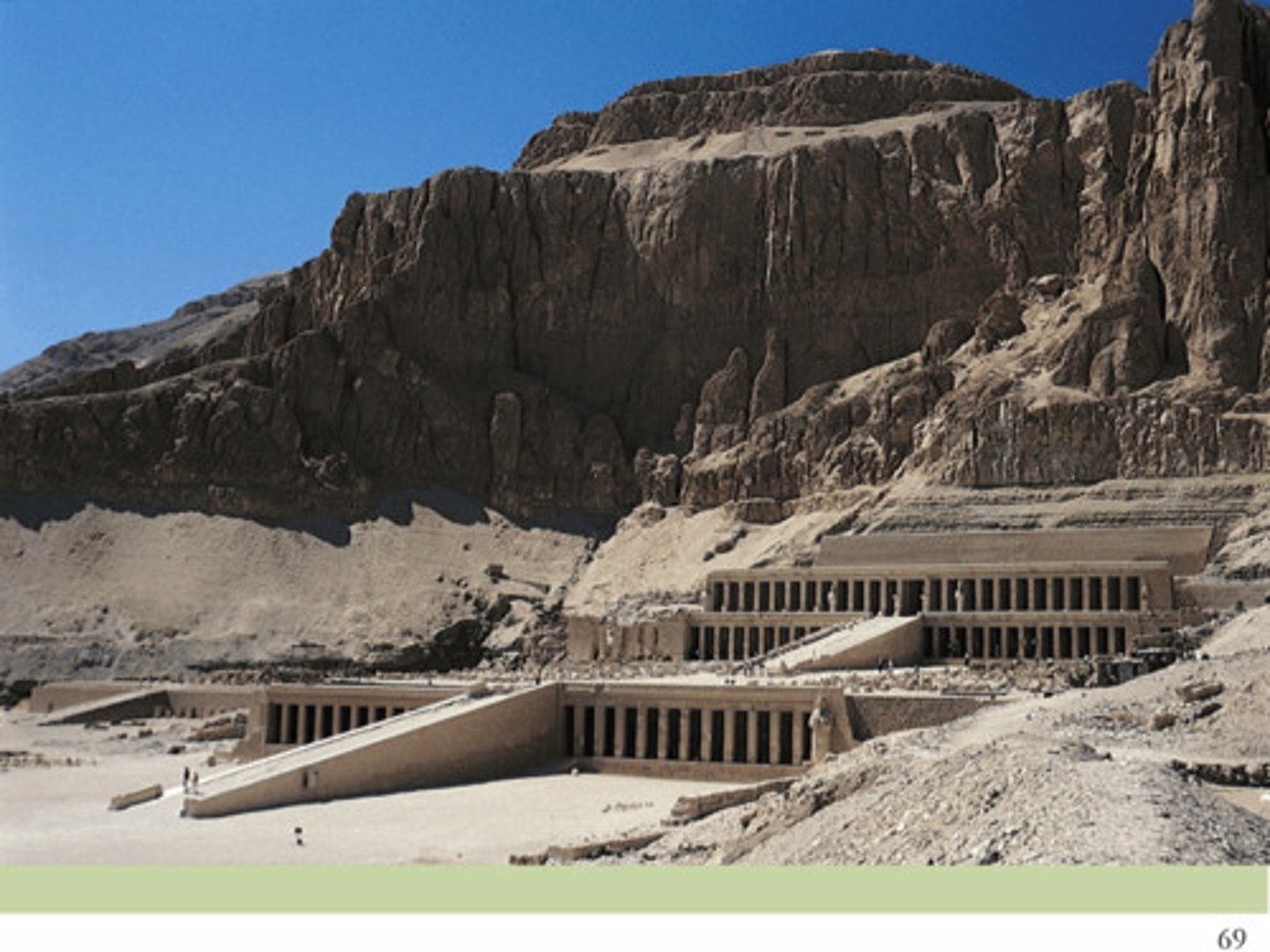
Hypostyle Halls
large space w/ flat roof supported by rows of columns (ex: Temple of Luxor & Temple of Amun @ Karnak)
When was the Egyptian revival?
mid 19th century
Pyramids in Central America
used as temples
ziggurats
often added onto over time (new temple over old)
Minoans in the Aegean
Palace @ Knossos
Mycenae
Lion Gate, precursor to Greek Arch (forerunner to post & lintel)
sense of structure was inheritance from Neolithic Period
lion element from Egypt
Greek will refine post & lintel
Greek Architecture
united by language
founded on: private property, individual freedom (less than 35% weren't slaves), democracy
Colonnade
series of regularly spaced columns supporting an entablature & usually 1 side of a roof structure

Why were temples built?
housed gods
impress non-Greeks (vivid color, floral design)
what are the 3 Orders?
Doric Order-oldest, simplest, most massive
Ionic Order-"feminine", ionian islands developed it
Corinthian Order-variation of Ionic order
Metope
any of the panels, either decorated or plain, b/t the triglyph on a Doric frieze
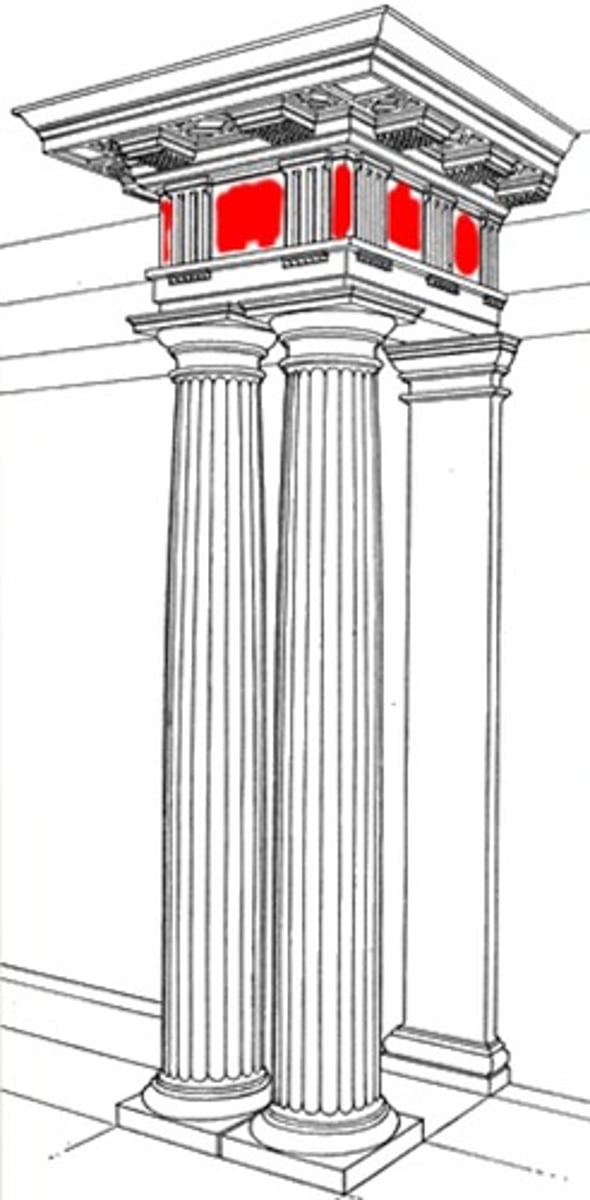
Triglyph
1 of the vertical blocks separating the metopes on a Doric frieze
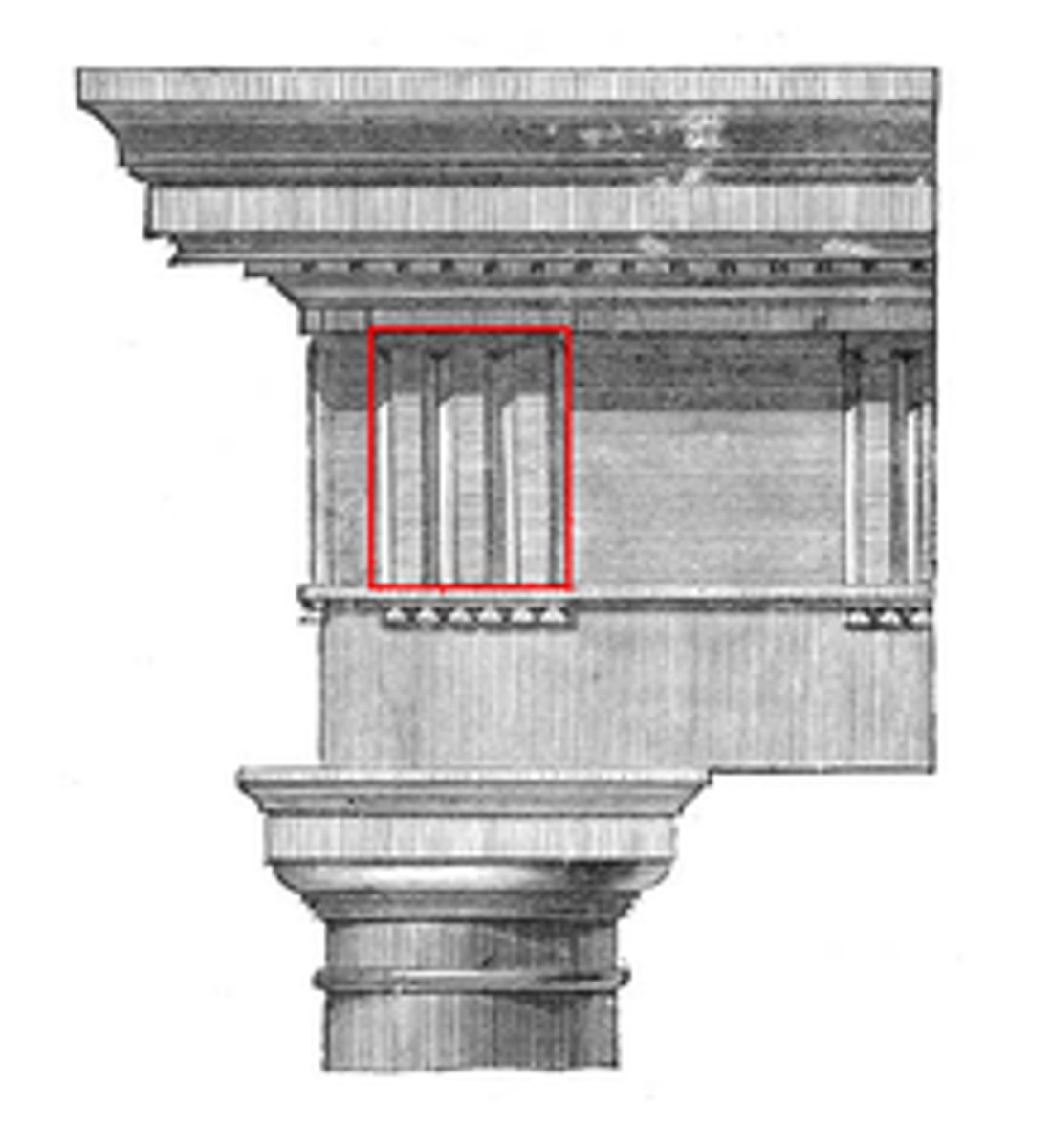
Doric Order
columns placed close, no base
plain capitals
metopes & triglyph
perfection of Doric - Parthenon
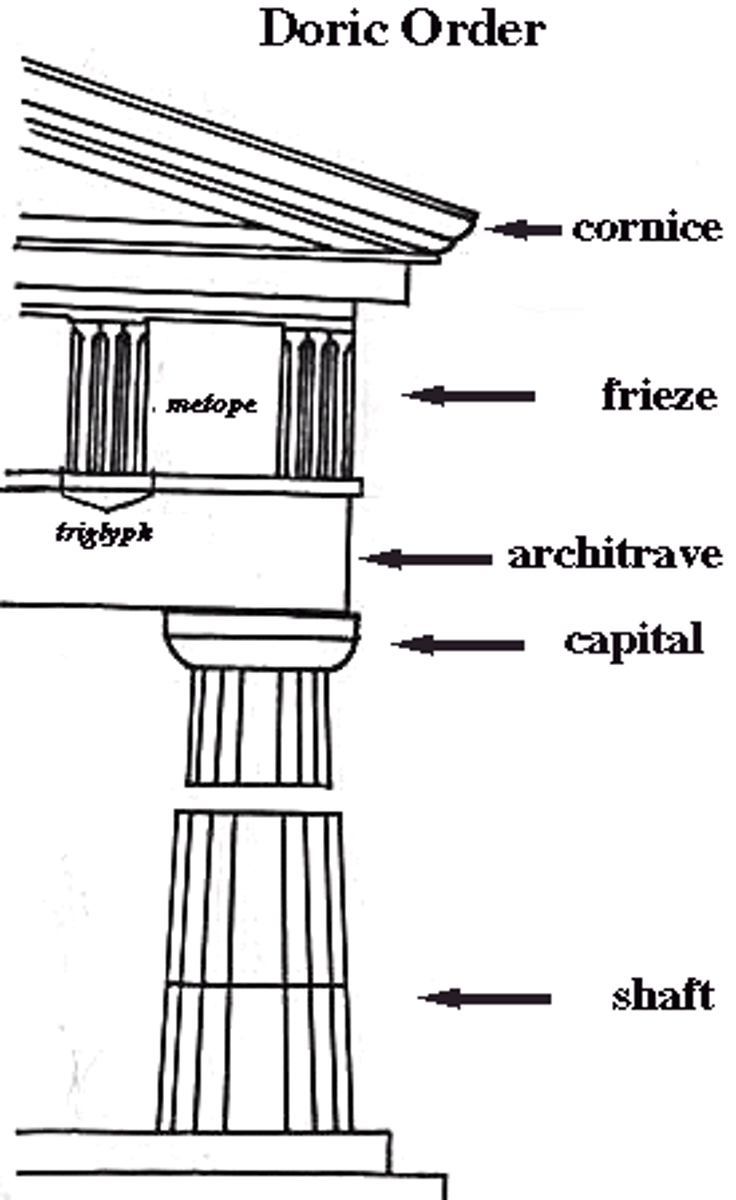
Ionic Order
smaller buildings & interiors
recognizable by capital
perfection of Ionic - Temple of Athena Nike
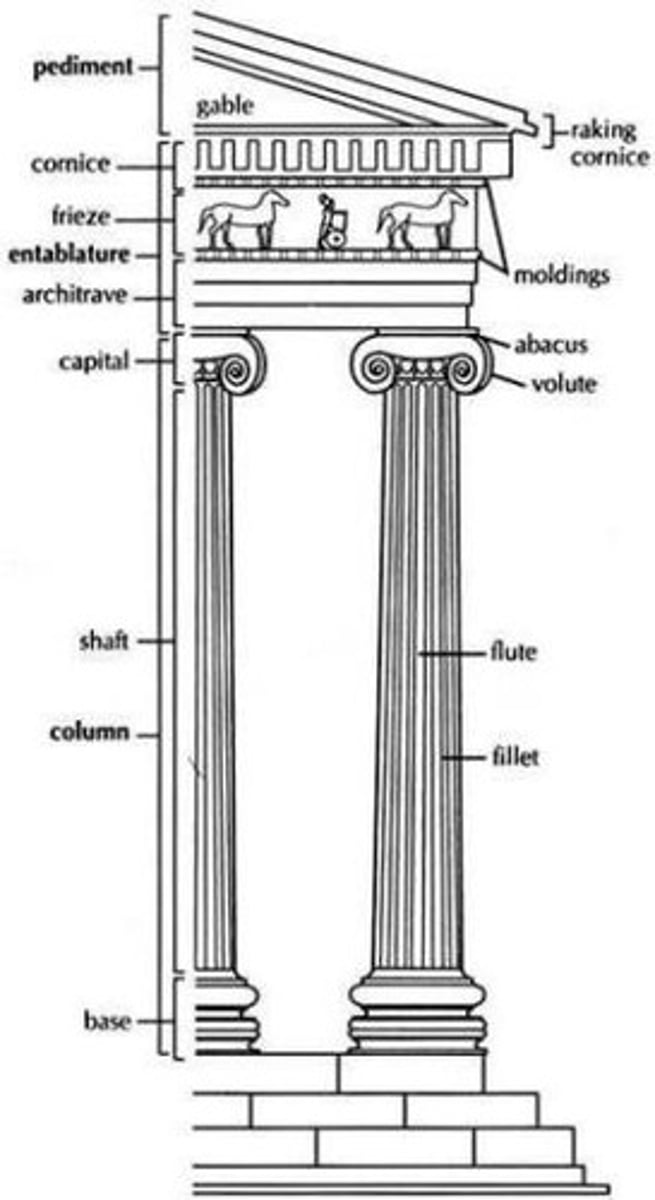
Corinthian Order
different capital from Ionic (leaves)
found on interiors
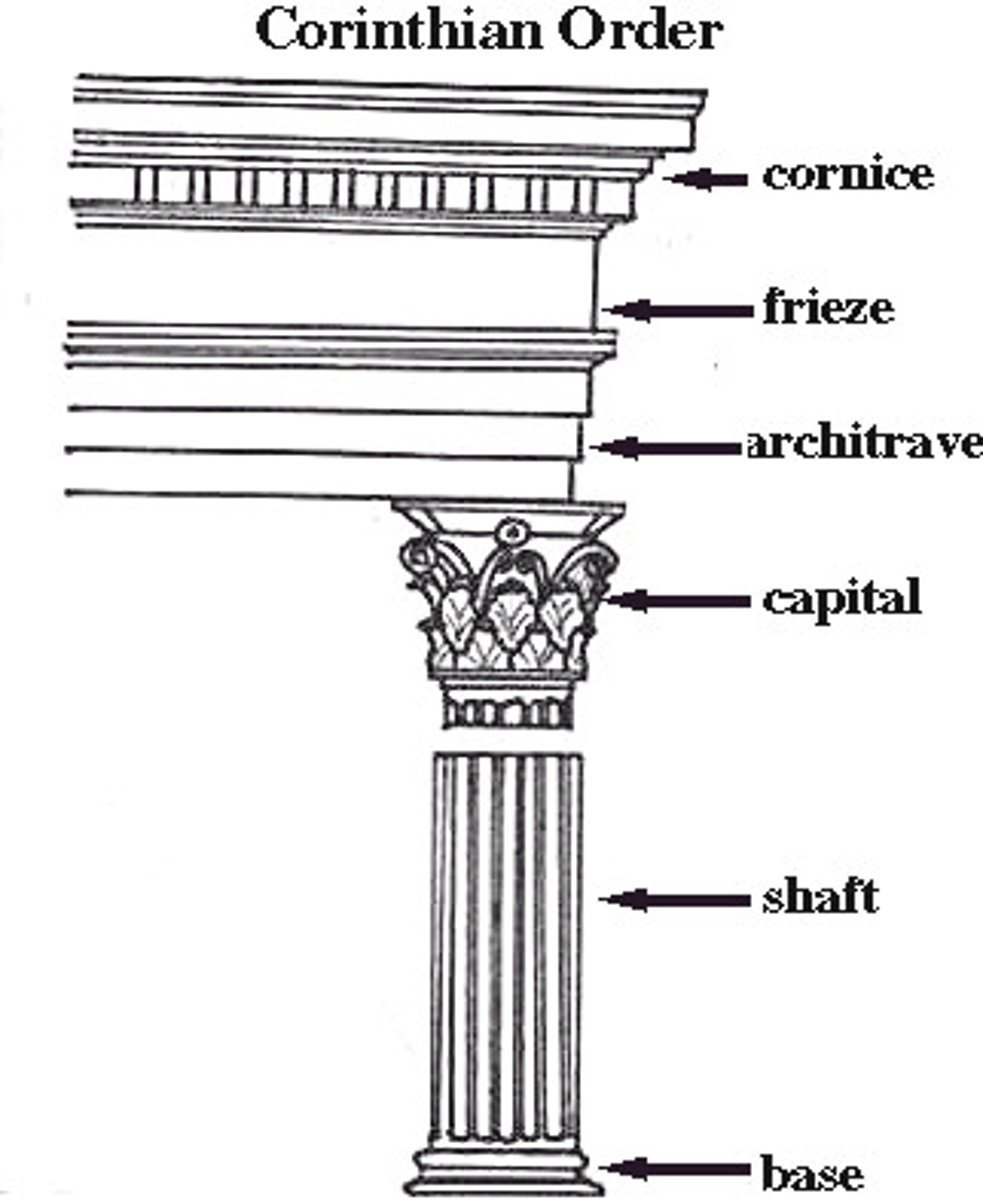
Entasis
slight convex bulge given to a column to offset the optical illusion that it is thinner in the middle
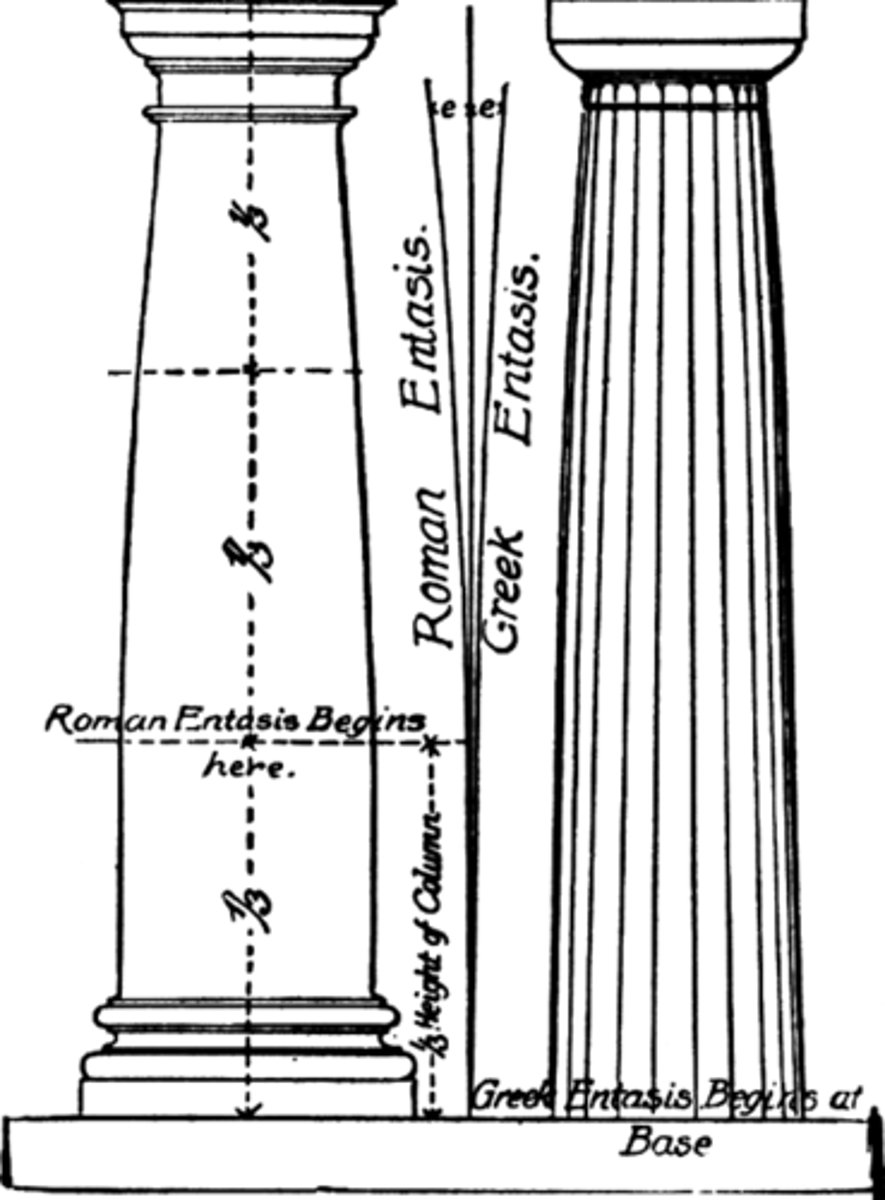
Acropolis
Athens, Greece; 448-432 BC
Agora
the marketplace in ancient Greece
Carytids
a sculptured female used as a column
Atlas
sculpted male figure used as a column
Tuscan Order
unlike Doric, supports an entablature w/ no decoration (wooden temple w/ pitched roof)
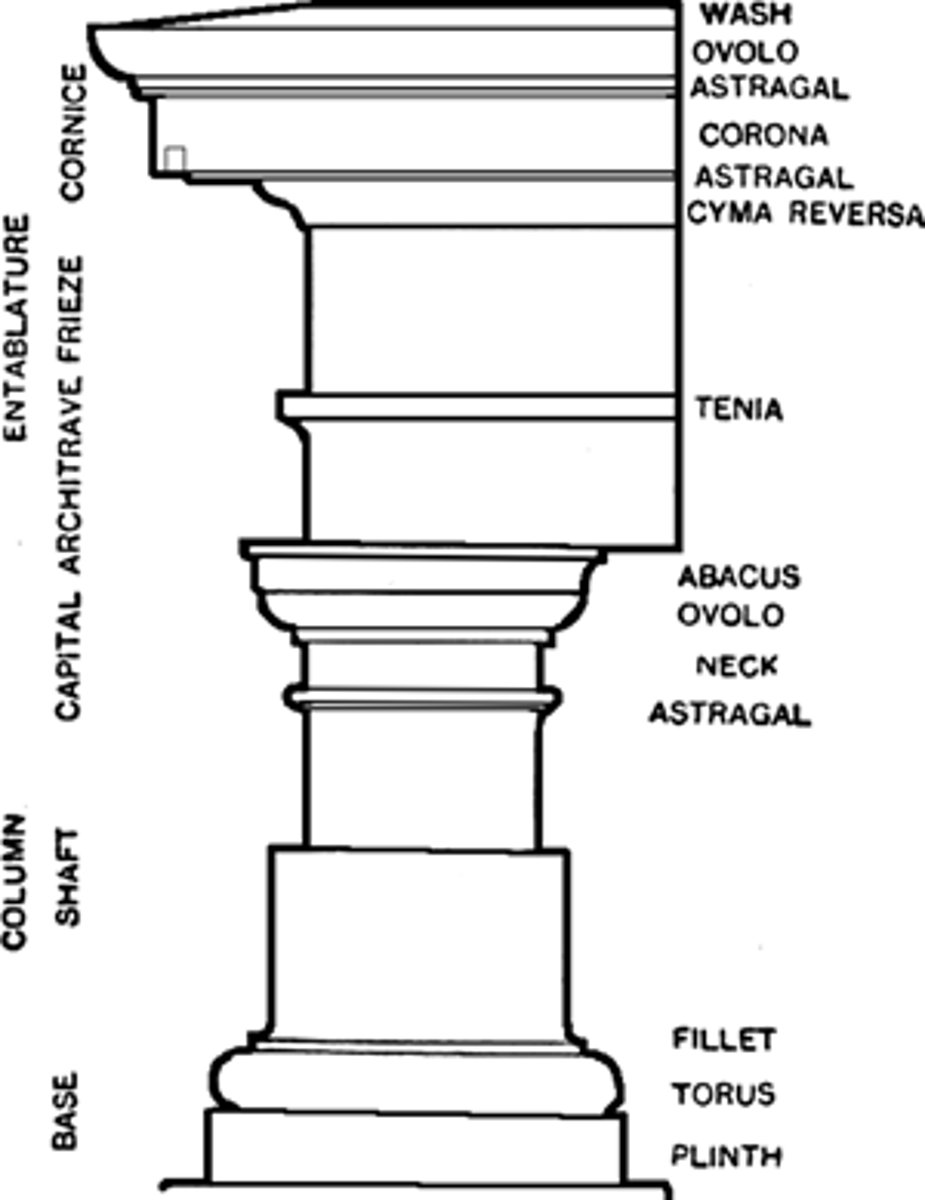
Composite Order
Ionic and Corinthian; roman innovation
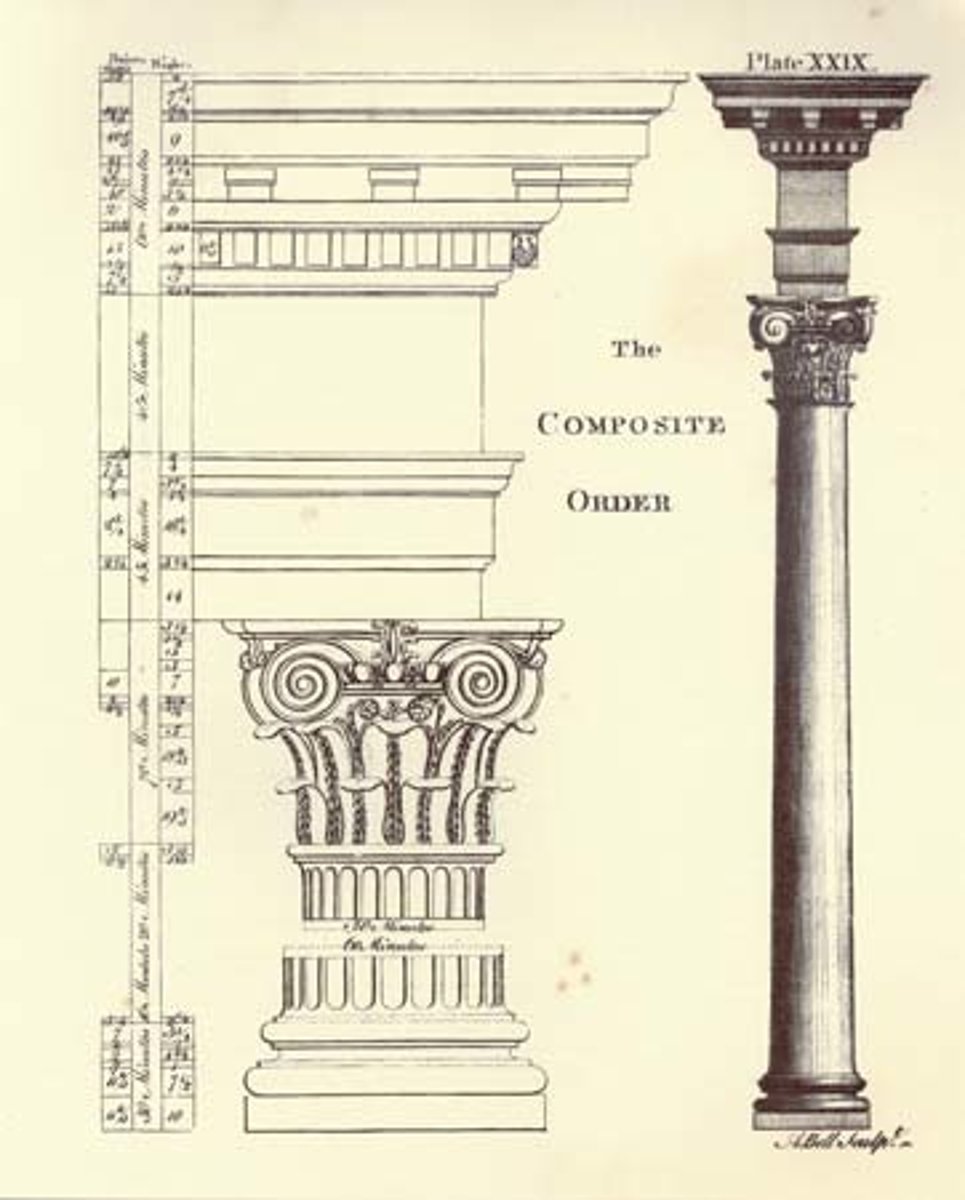
Greeks
objects in landscape (balance harmony refinement of form not structure) post and beam
Romans
made space(images in context), the arch, vault, dome, concrete
Barrel Vault
extending an arch along its depth
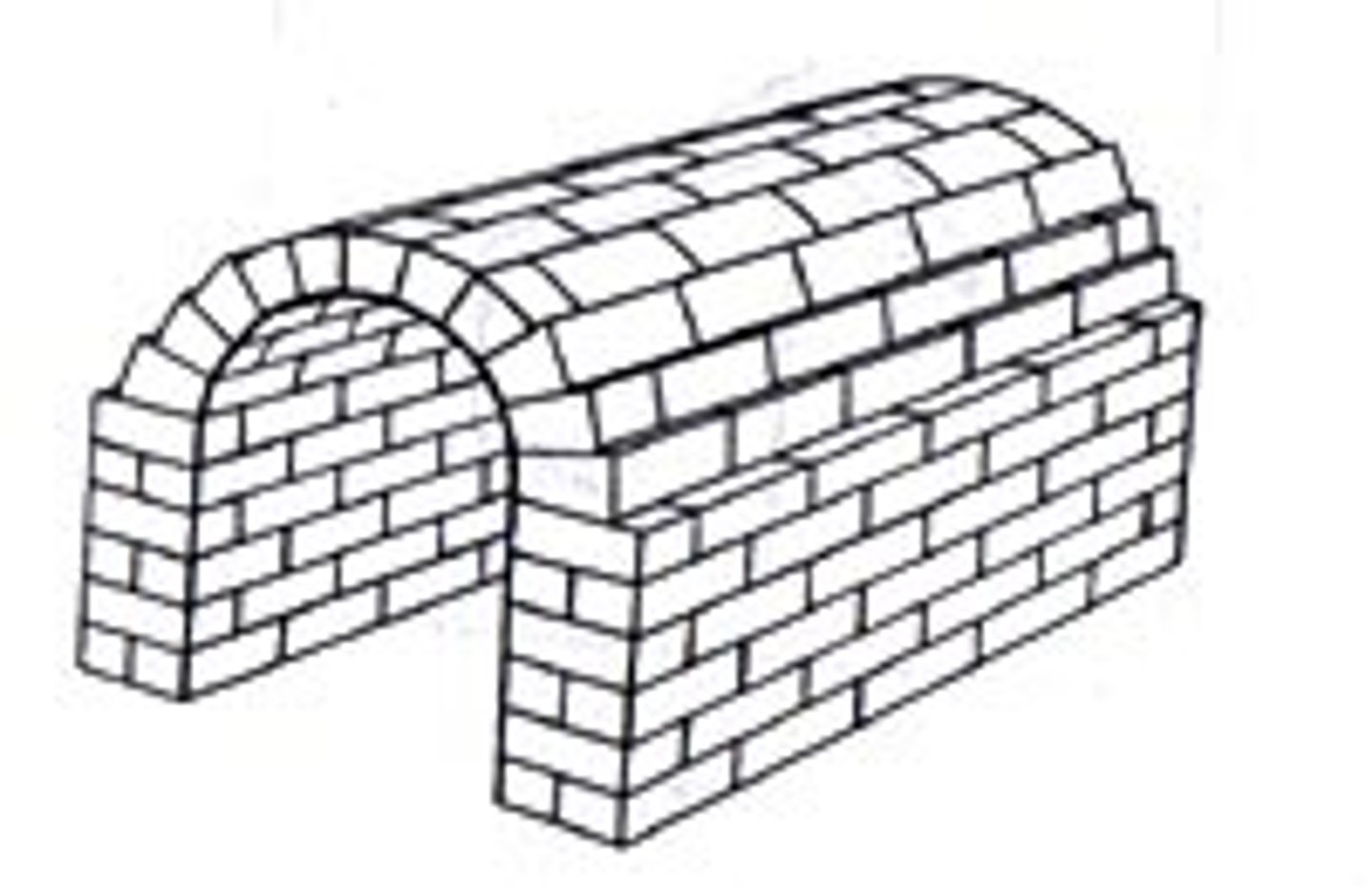
Groin vault
2 intersecting barrel vaults in 4 directions, used in huge interiors (gyms and baths)
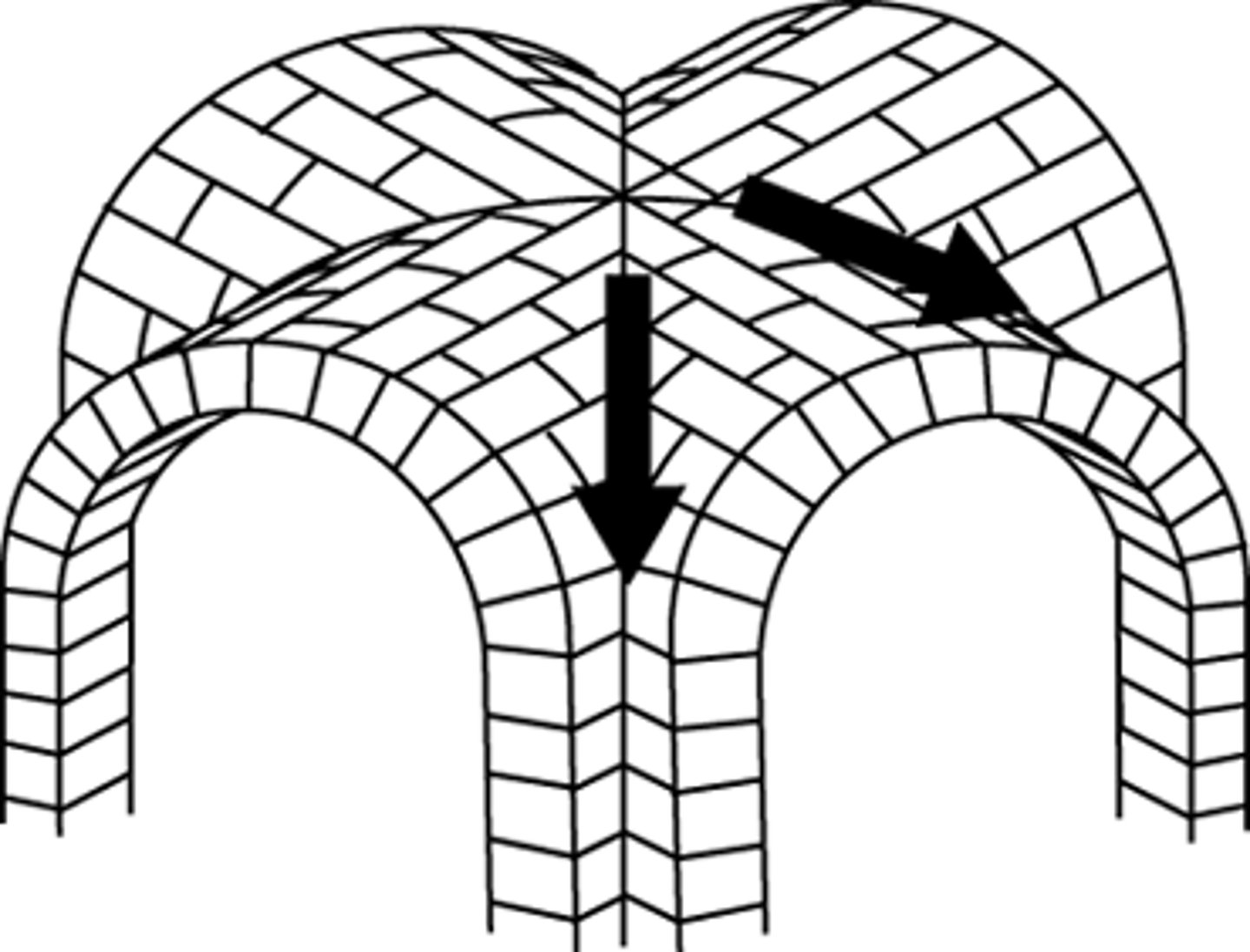
Pont Du Gard
Nimes, France (20-16 BC)

Maison Carree
Nimes, France (10 ACE)
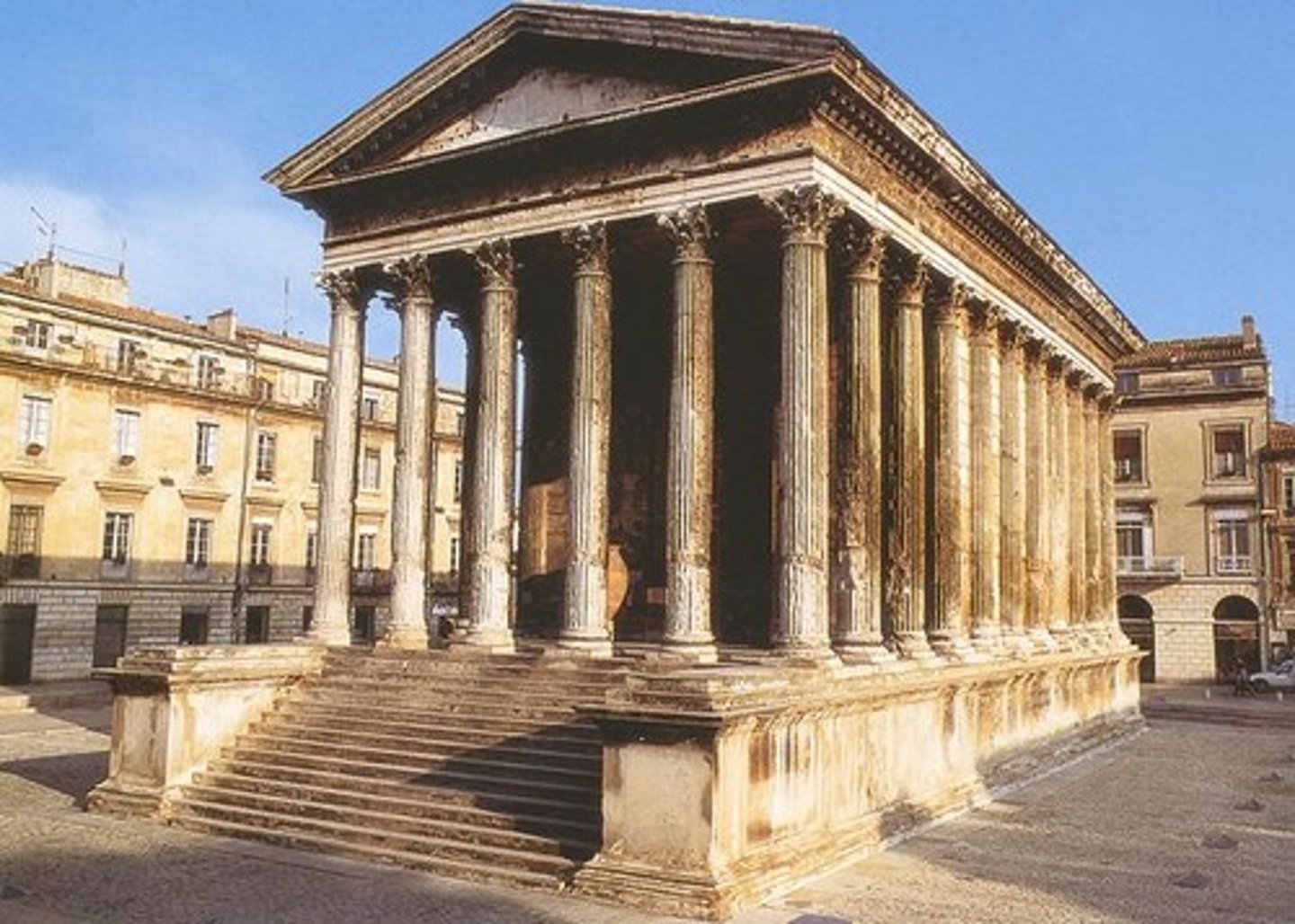
Concrete
volcanic ash, lime ash, sand, water, and gravel
Coliseum in Rome
completed around 80 ACE, seats 50k, orders differ by levels

Pilaster
column in wall
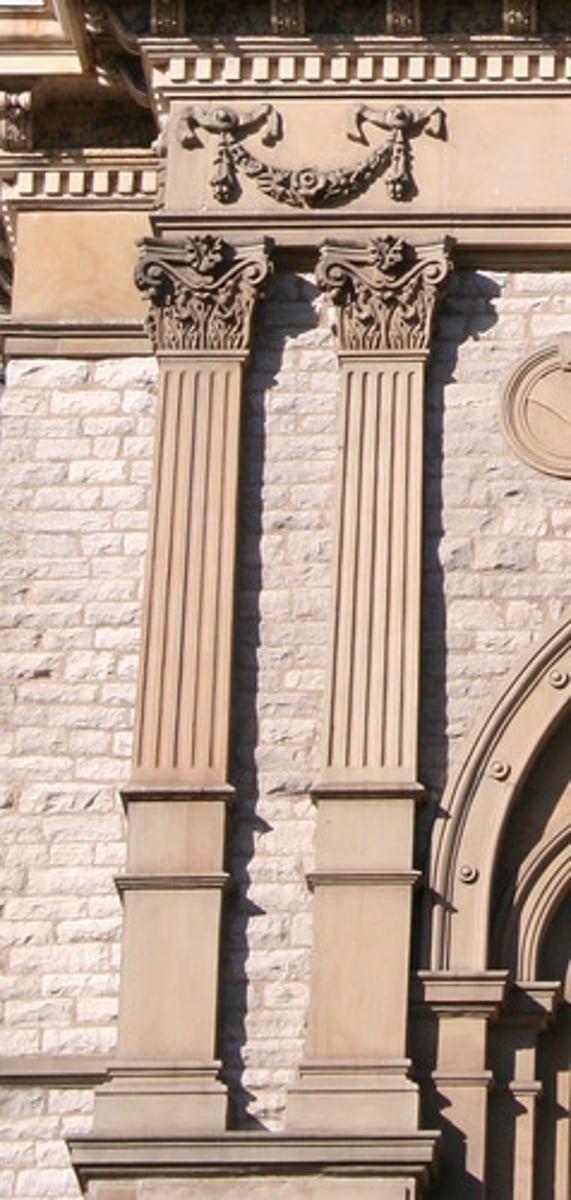
Circus Maximus
seated 250k; precursor to NASCAR
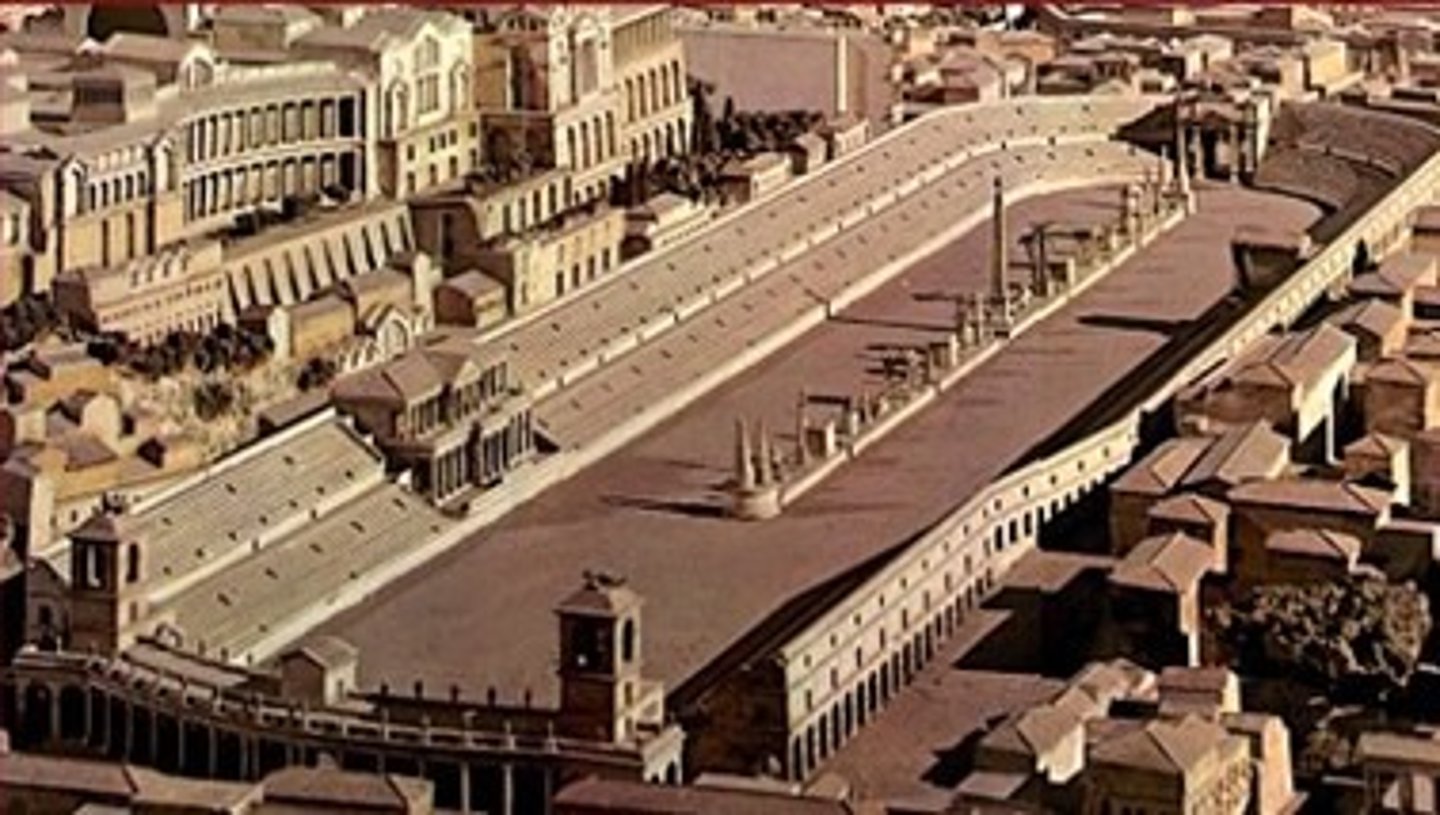
Pantheon (125 CE)
double pediment, oculus, built under Hadrian (117-138 ACE)
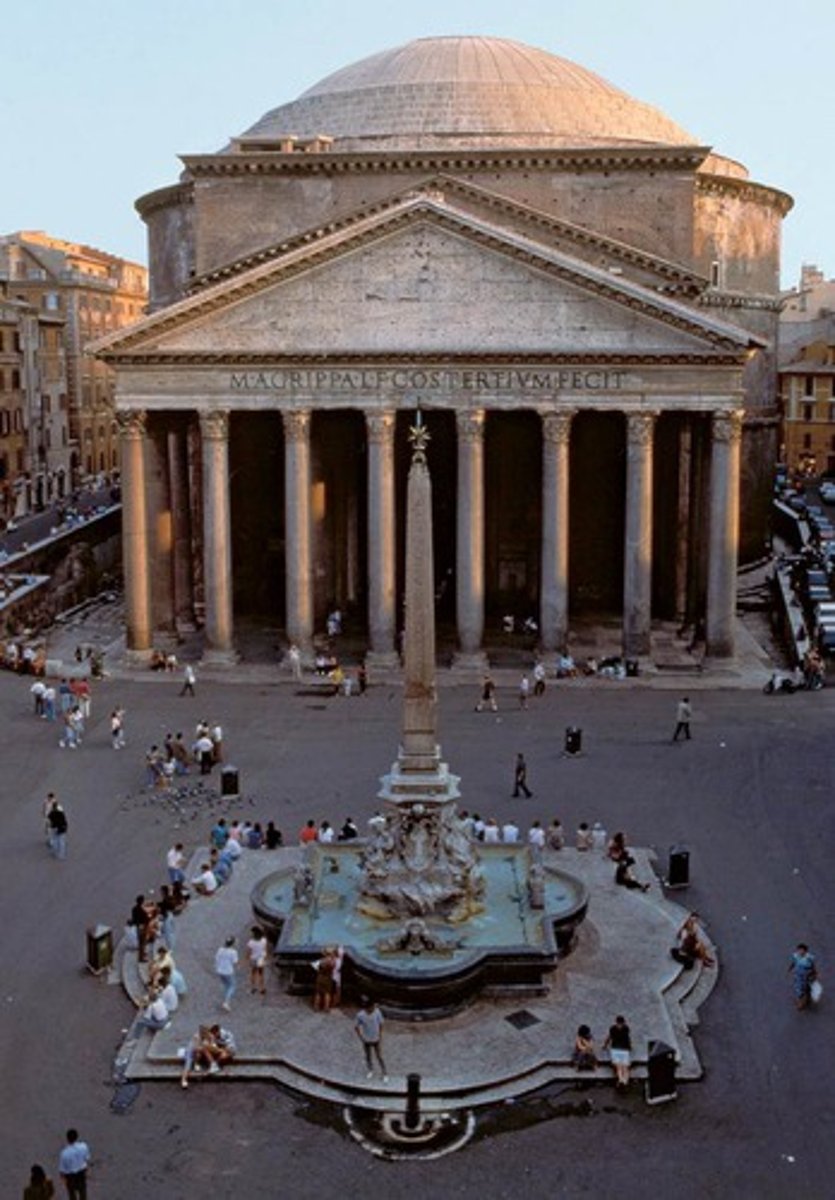
Pediment
triangle shape over colonnade
Portico
a colonnade space forming an entrance or vestibule
Constantine I (306-337 ACE)
Edict of Milan (313) - proclaimed tolerance of all religions which gave Christians authority to build churches
Early Christian Churches
Basilica Plan
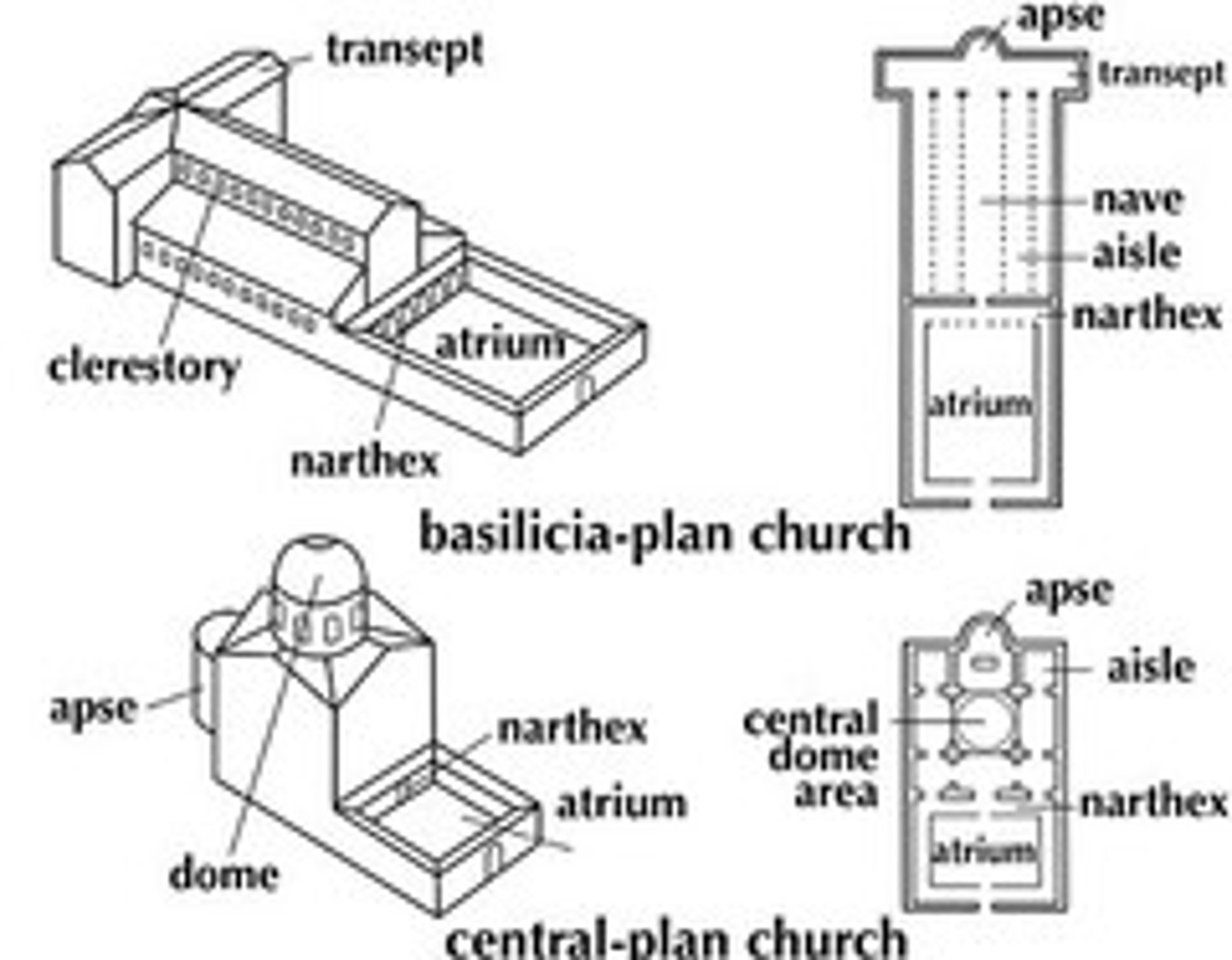
Pendentives
curved triangular panels which hold the load of a dome

Hagia Sophia
built by Justine
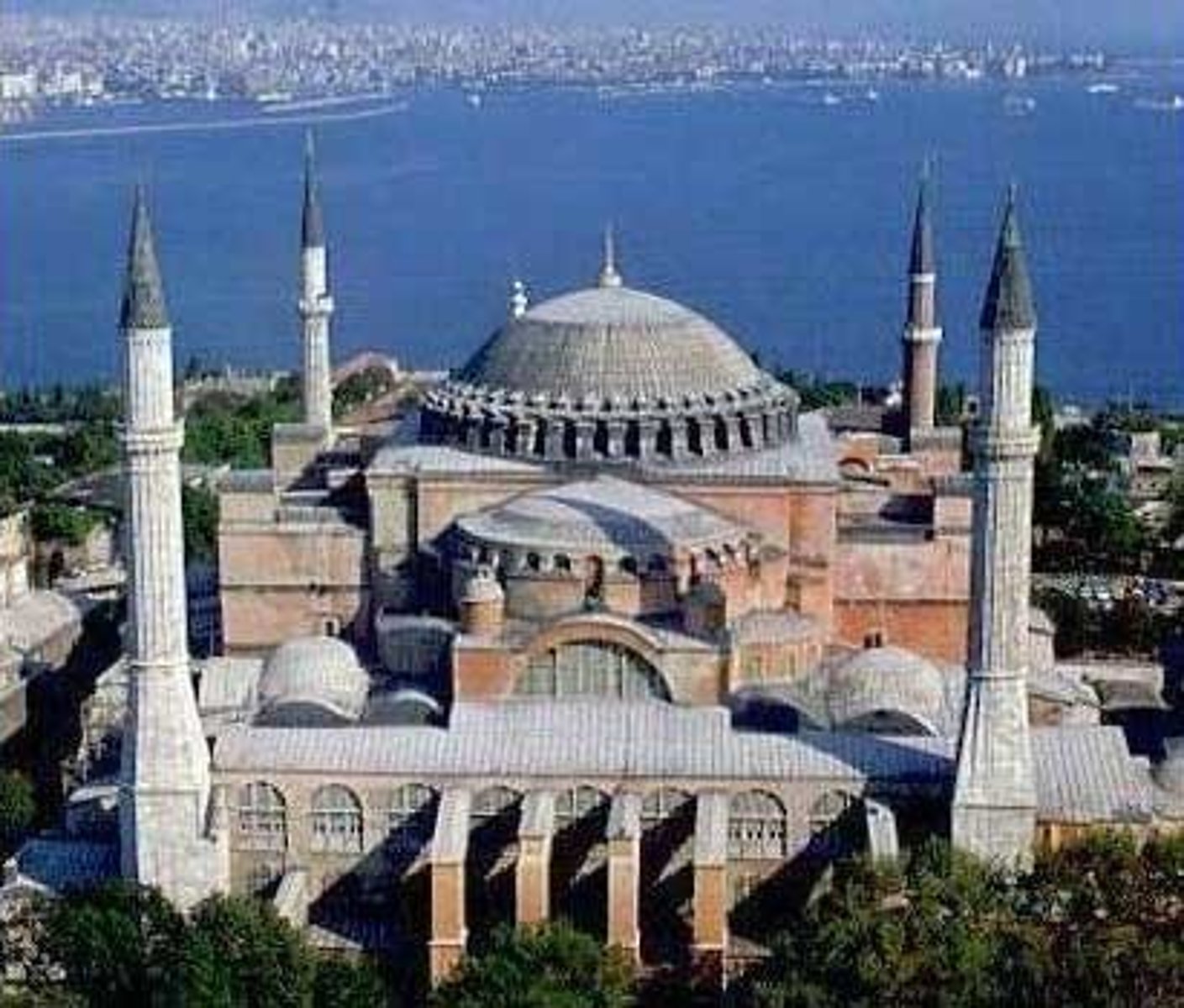
Byzantium
new Roman capital
changed to Constantinople (Constantine I)
now Istanbul, Turkey
St. Miniato al Monte
Florence, Italy (1062-90)
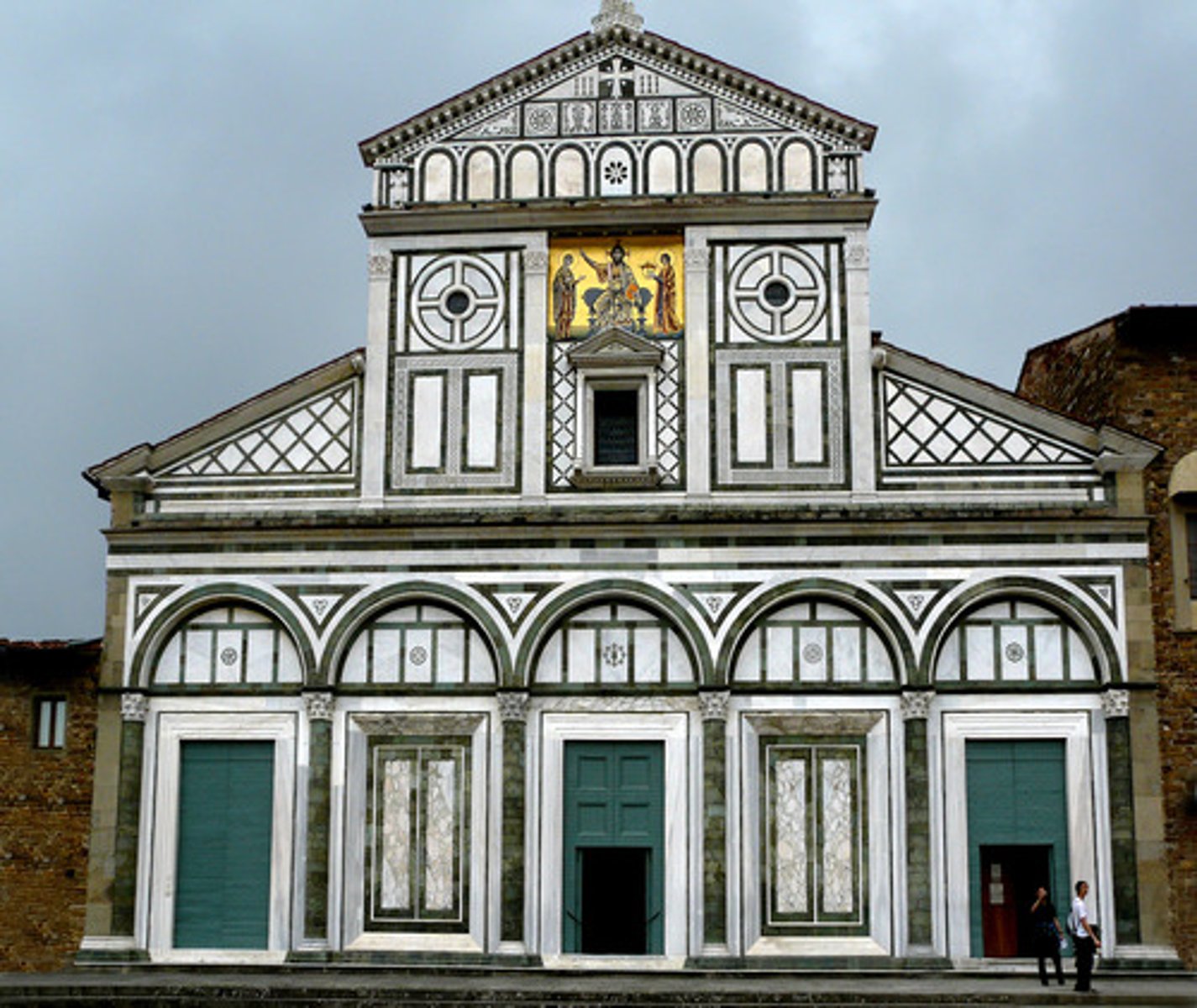
Pisa Cathedral & Campanile
Pisa, Italy 1063, 1089-1272
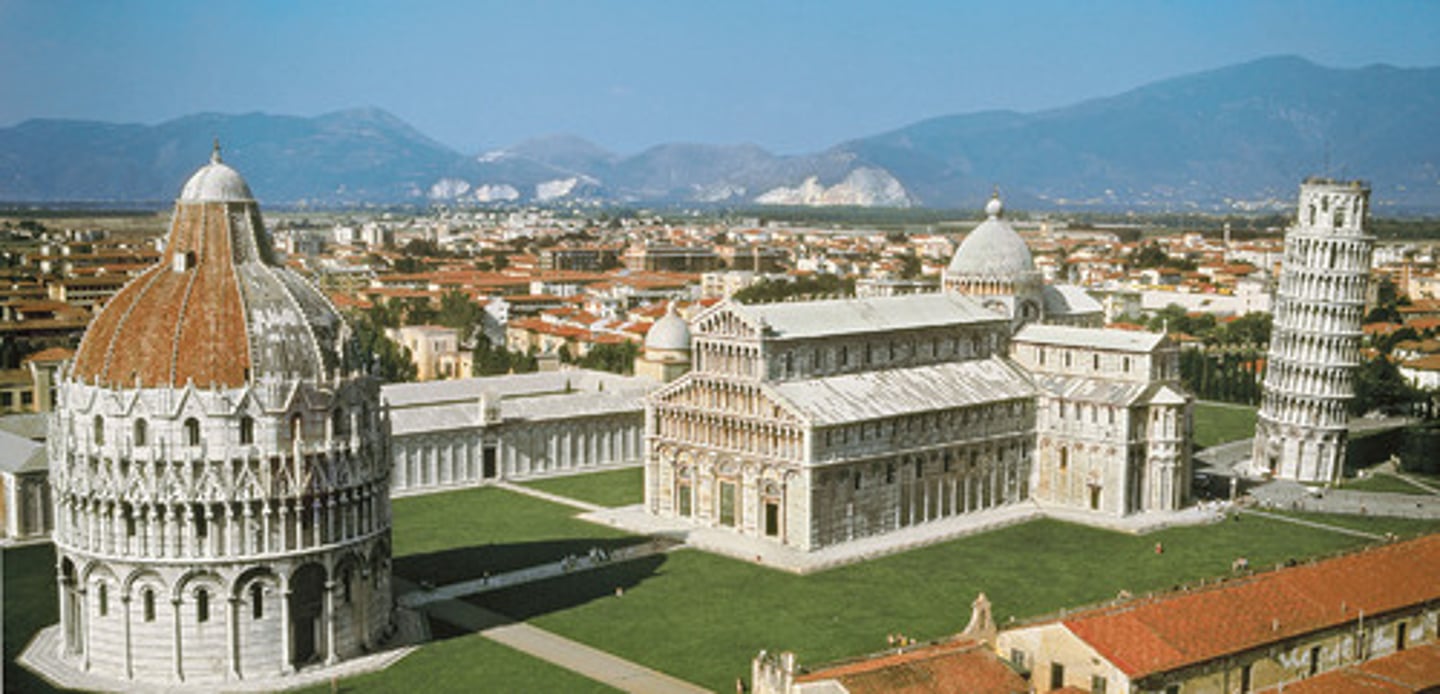
Gothic Architecture
structure is also ornament (like Greeks)
not thick walls; use buttresses @ 90 degree to take collected pressures of ribbed vault and arch
Ribbed Groin Vault
groin vault + pointed arch

Pointed Arch
signals gothic architecture/style
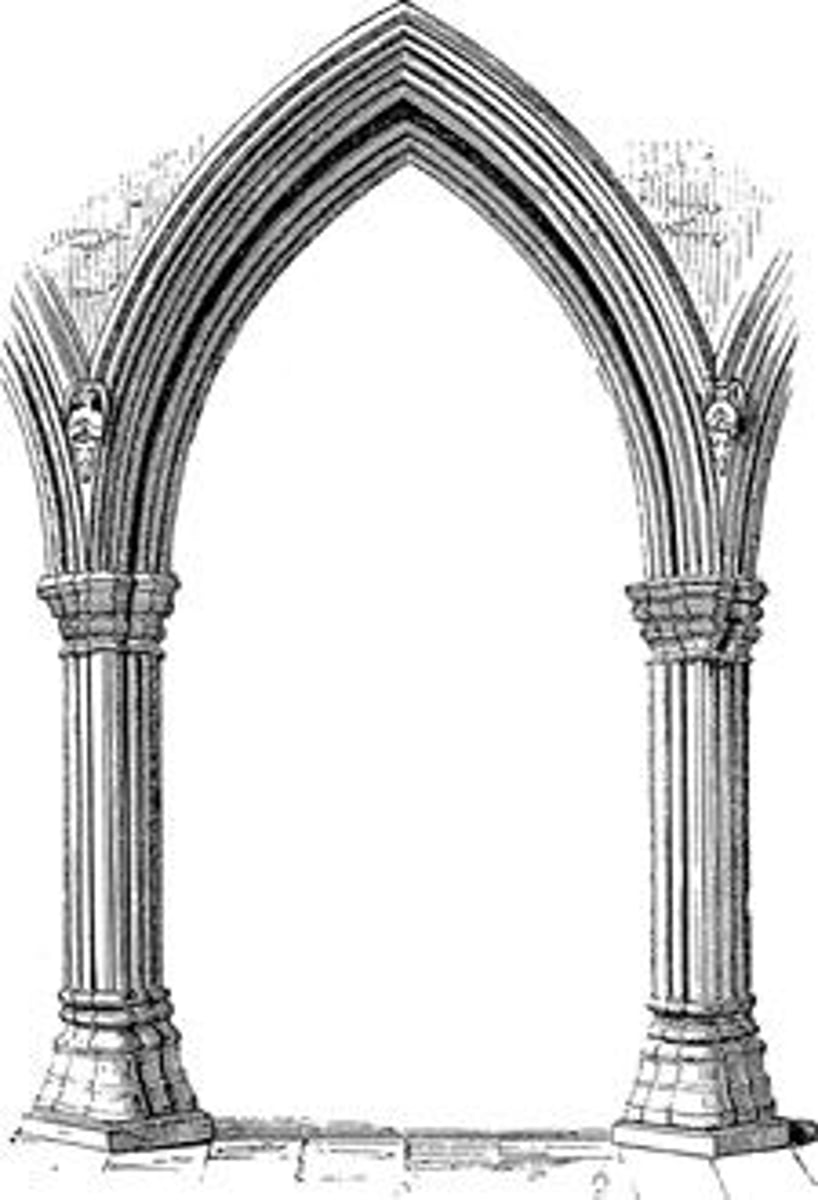
Buttresses & Pinnacles
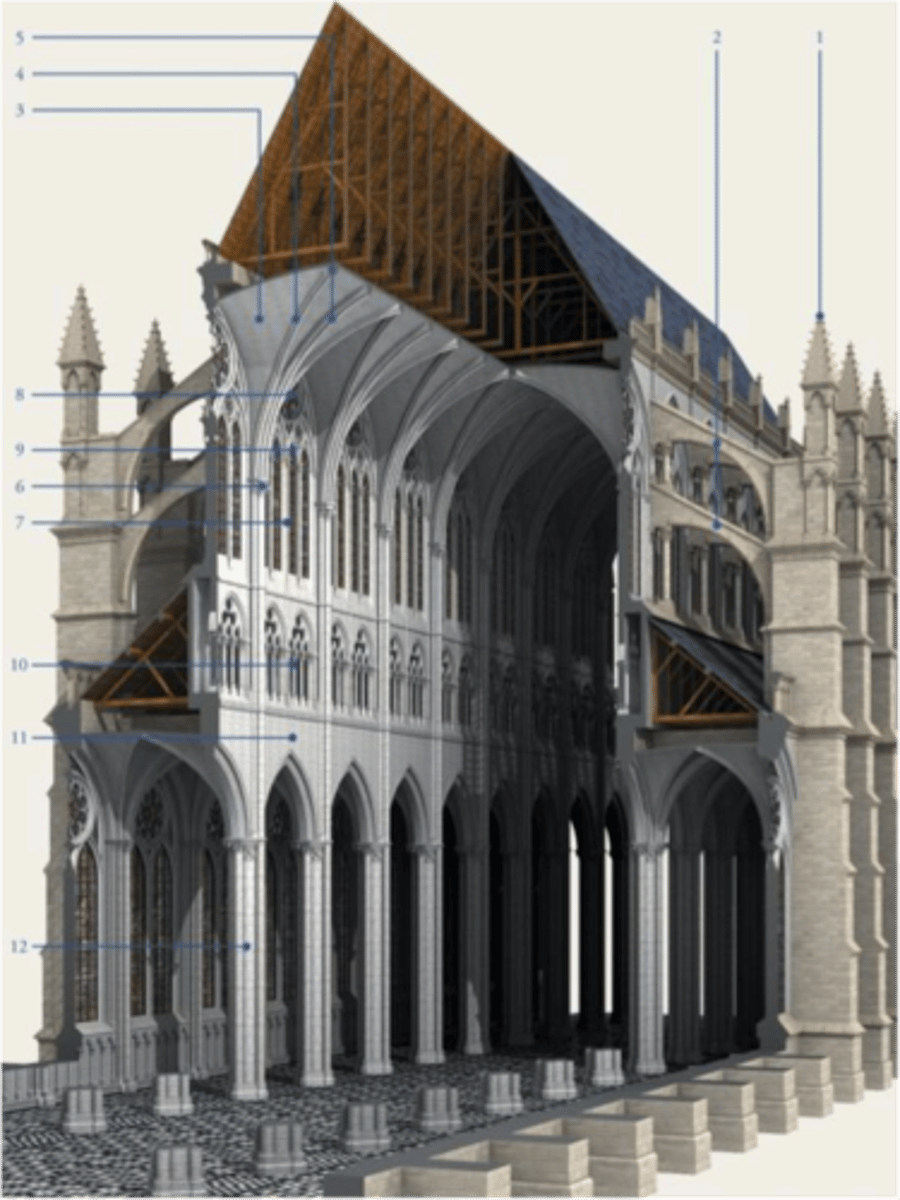
How does English gothic architecture differ from French gothic architecture?
English is more rectangular (churches)
Notre Dame de Paris (1163-1250)
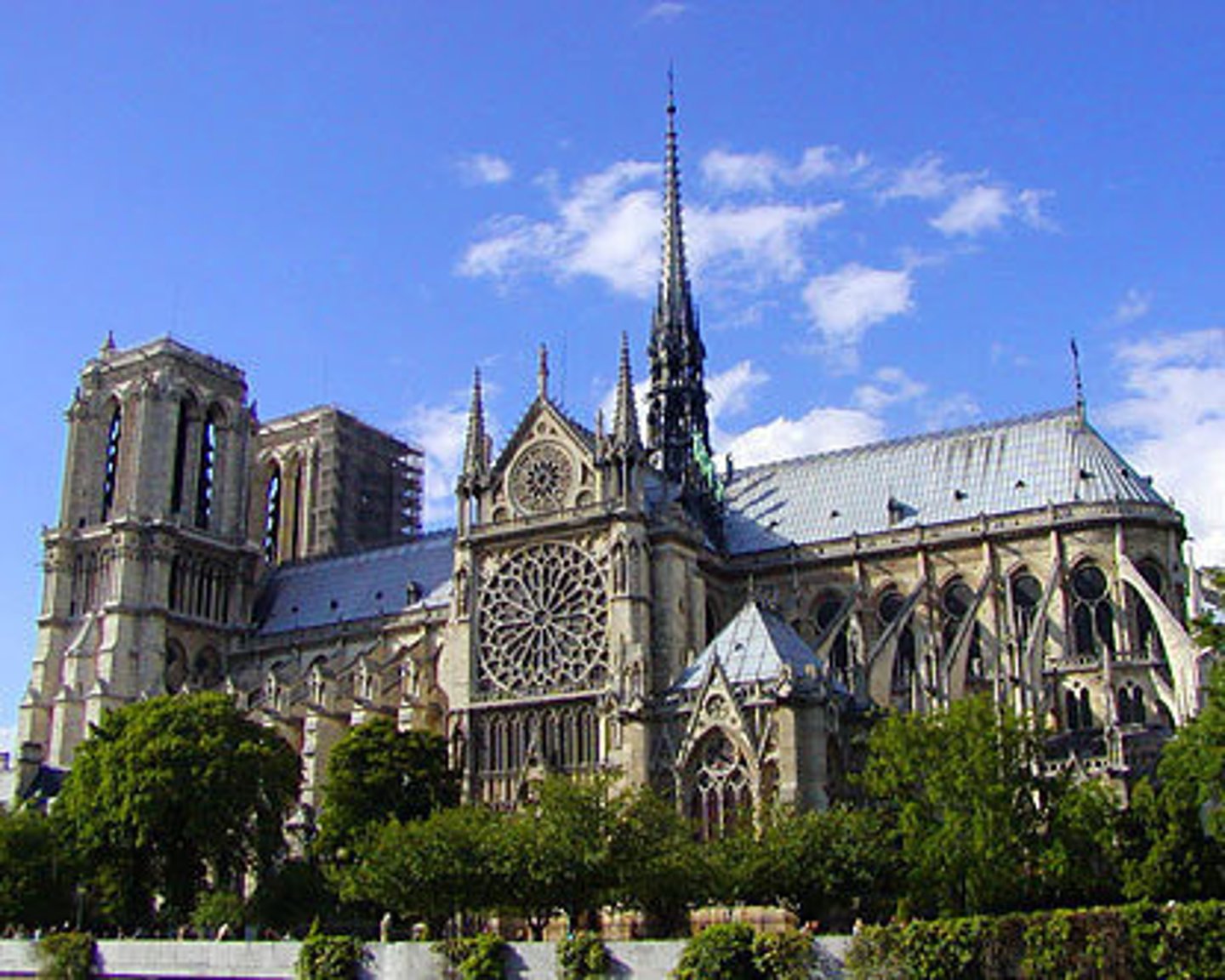
Chartres Cathedral (1130-1260)

Apse
semi circular projection, containing an altar

Transept
2 arms in a "Latin cross" plan
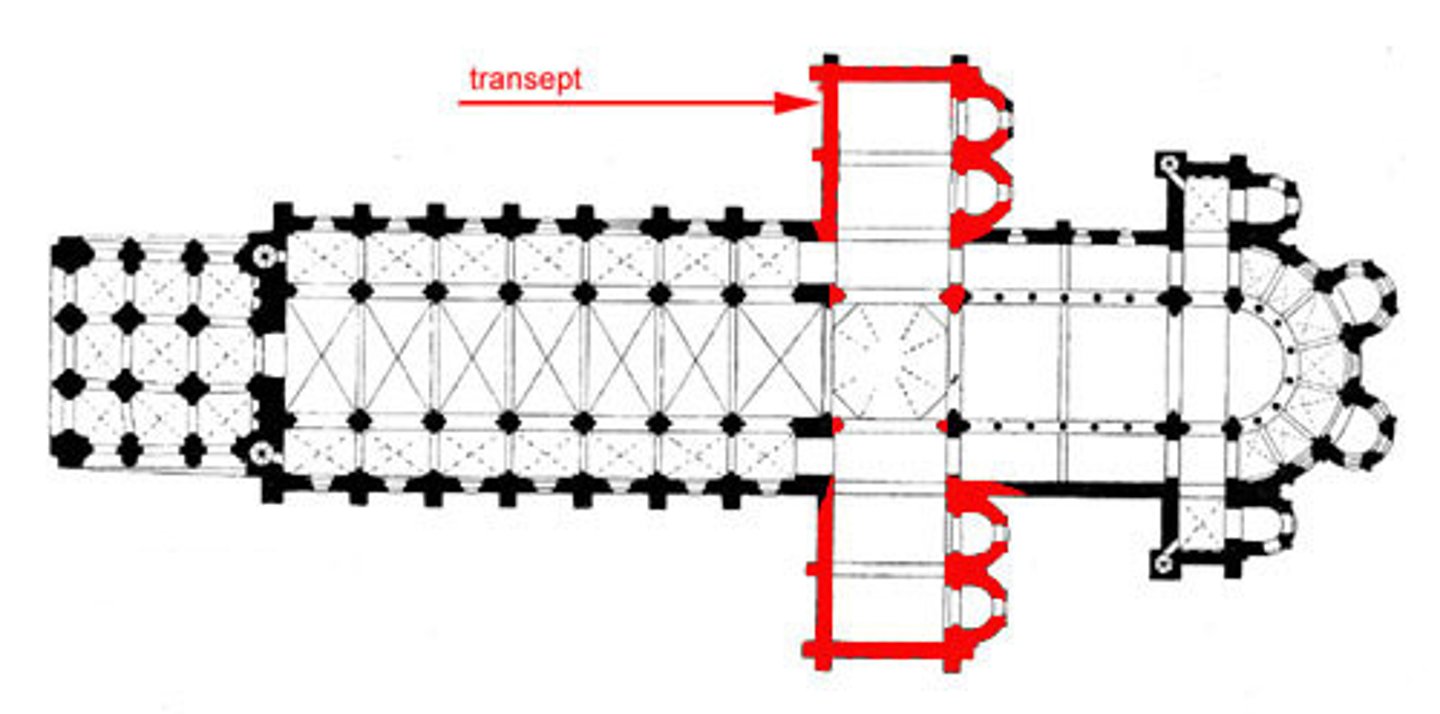
Nave
space beyond transept crossing toward west/"front" of church
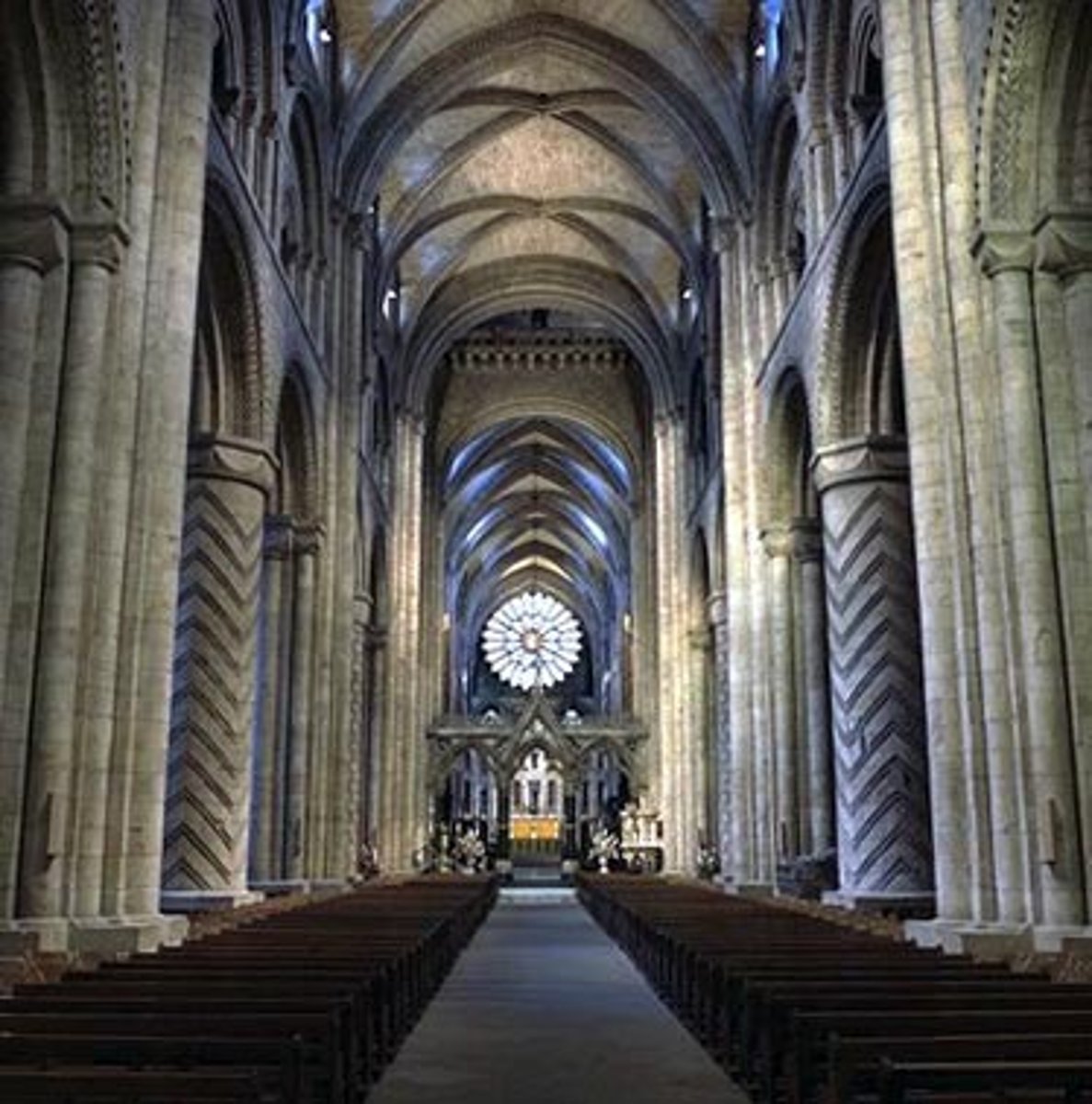
Choir
where monks sit
